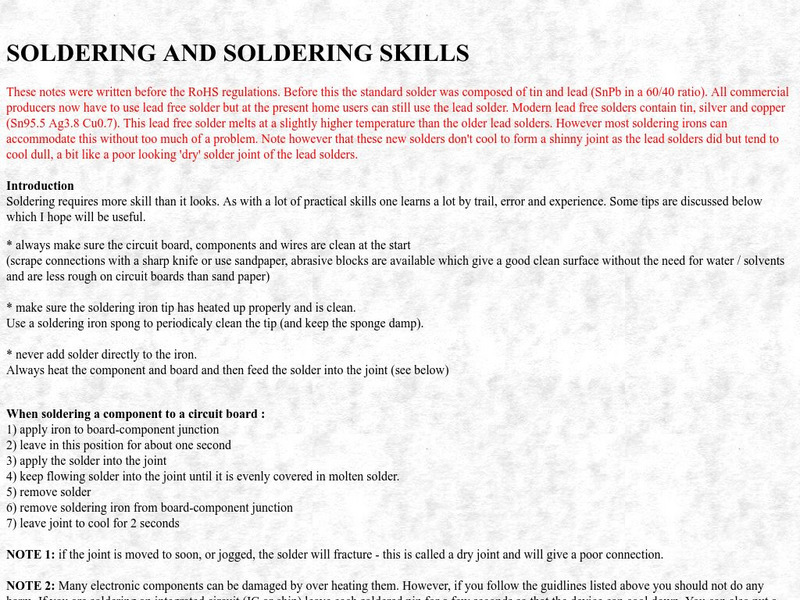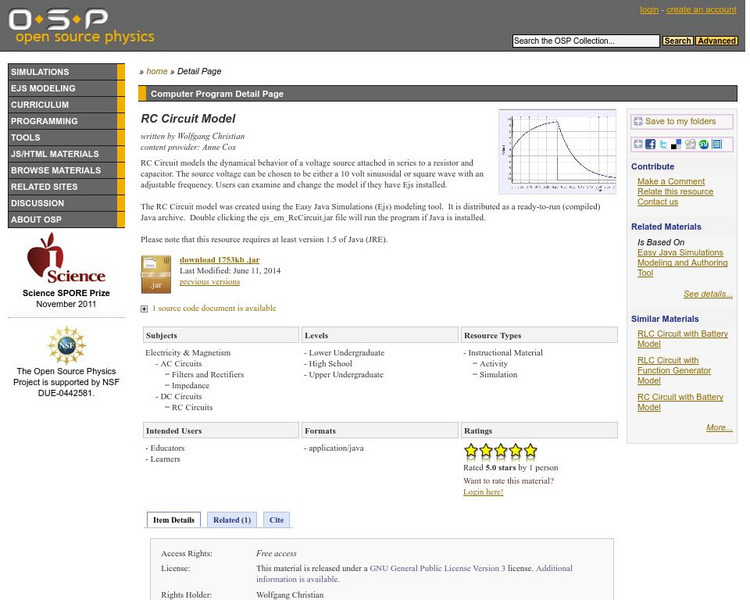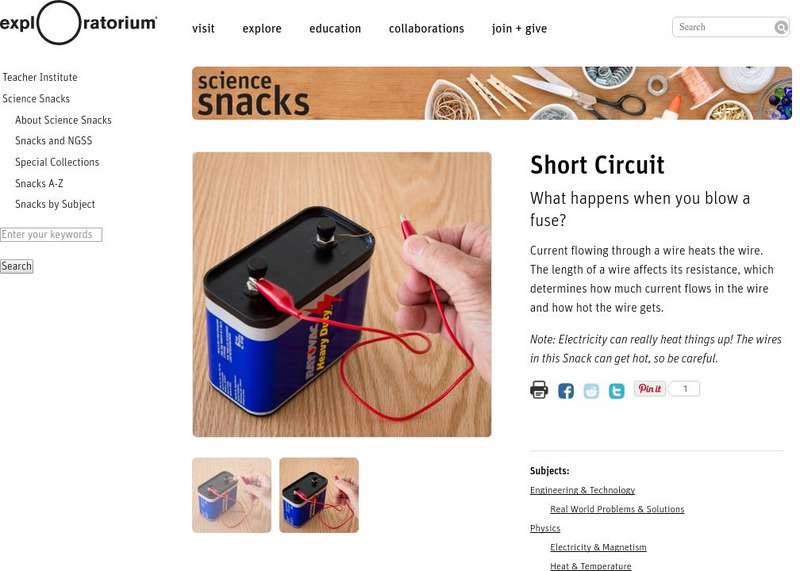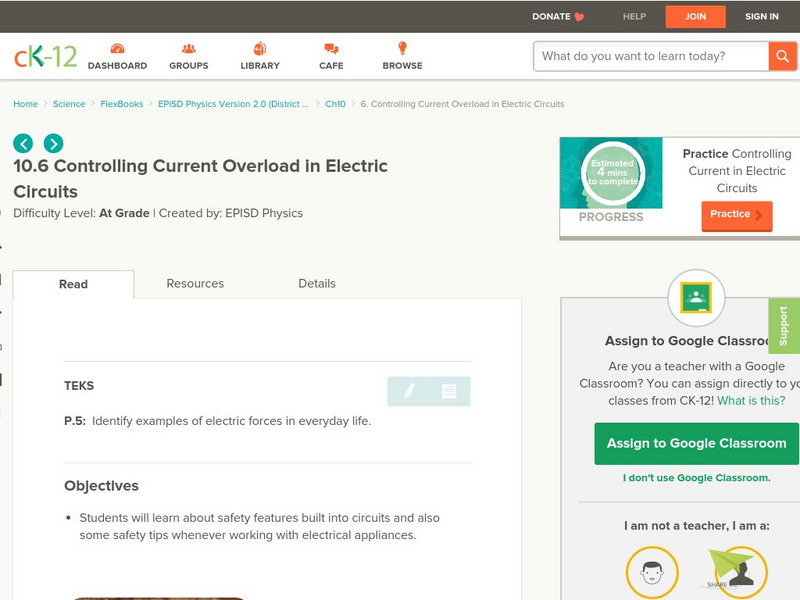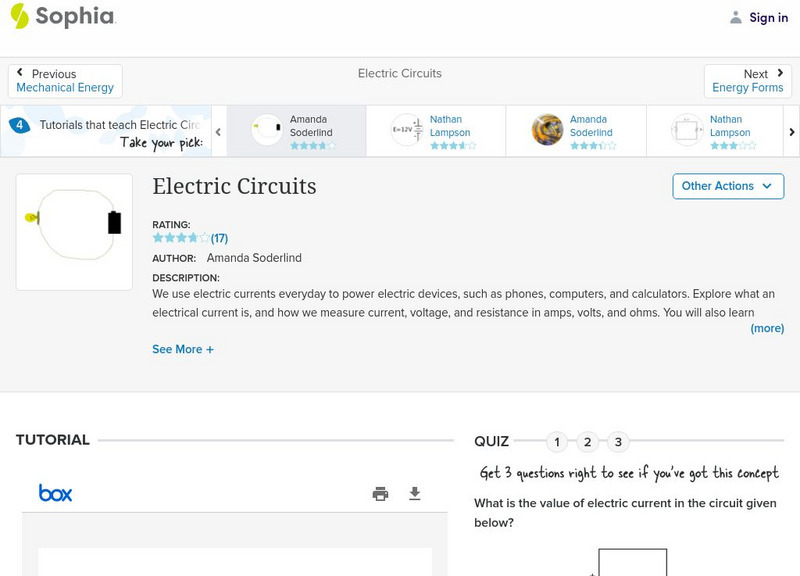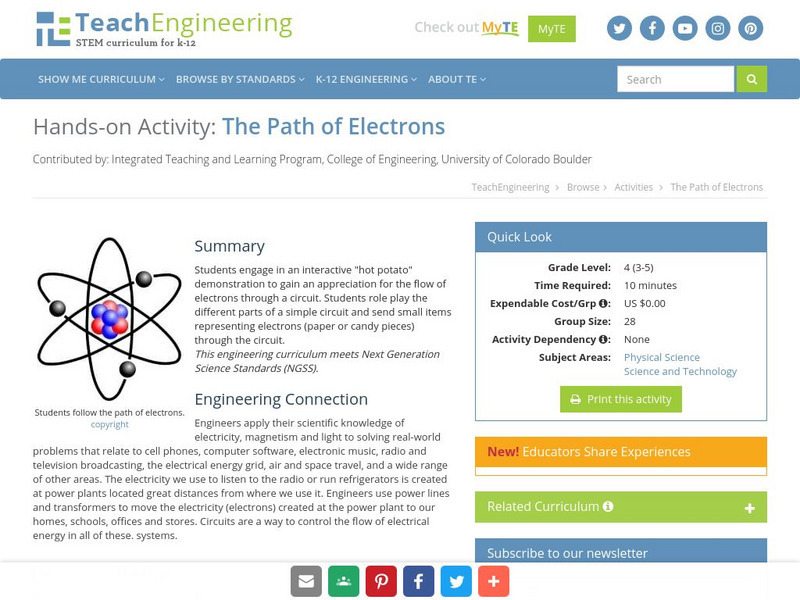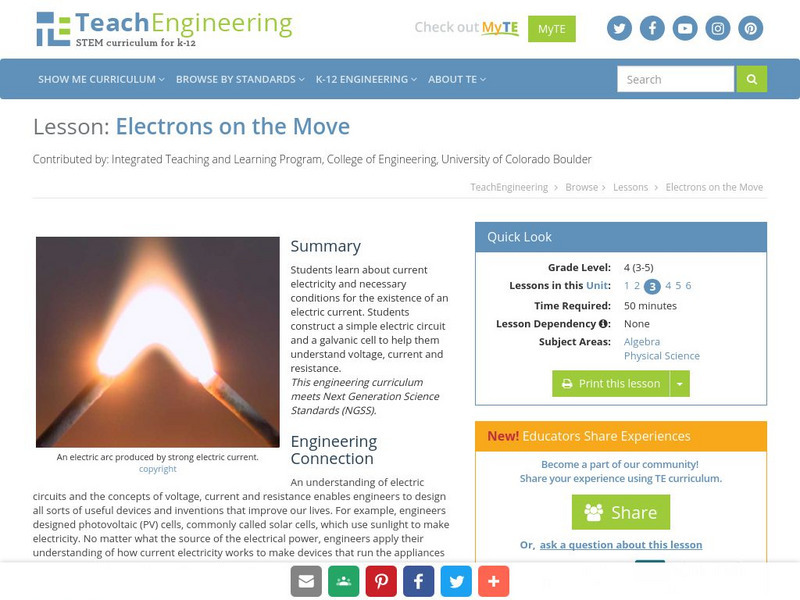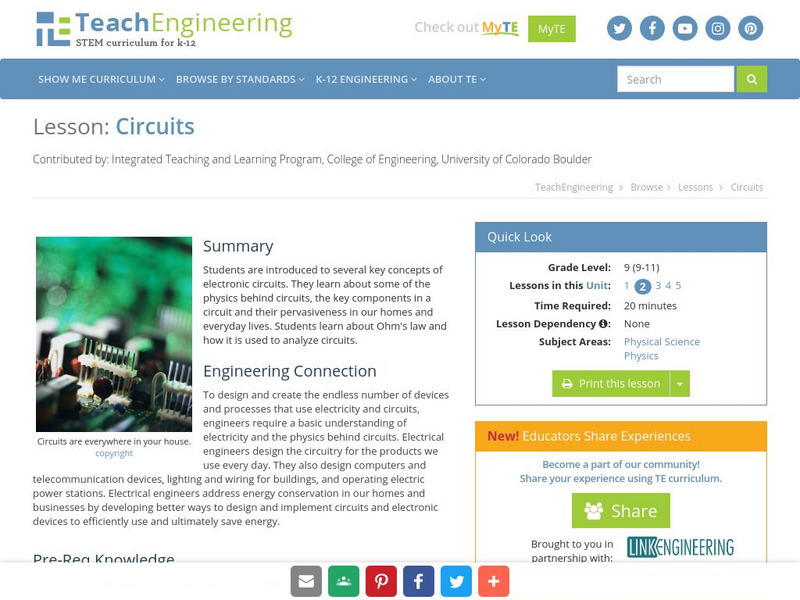Creative Science Centre
Creative Science Centre: Soldering and Soldering Skills
Soldering requires more skill than it looks. As with a lot of practical skills one learns a lot by trail, error and experience. Some tips are discussed here. These notes were written before regulations were introduced requiring solder to...
Wikimedia
Wikipedia: Series and Parallel Circuits
Wikipedia offers information on two basic ways of wiring components in electrical circuits, series and parallel circuits.
American Association of Physics Teachers
Com Padre Digital Library: Open Source Physics: Parallel Plate Capacitor
A simulation investigating a parallel-plate capacitor which is charged by connecting one plate to the positive end of a battery, and the other plate to the negative end. The battery sends electrons from one capacitor plate to the other...
American Association of Physics Teachers
Com Padre Digital Library: Open Source Physics: Rc Circuit Model
An electrical circuit simulation modeling the behavior of a voltage source attached in a series to a resistor and capacitor.
Open Curriculum
Open Curriculum: Capacitance and Inductance
Students learn about capacitors and inductors and their role in electrical circuits.
Other
Easyphysics: Chapter 15 the Circuit
Learners investigate circuits. Some topics examined are a photo resistor, capacitor, and diode. The resource includes a circuit applet.
Other
Easyphysics: Chapter 14 Basic Circuit
Learners investigate circuits. Some topics examined are a series circuit, parallel circuit, and Joule?s law. The resource includes practice problems with solutions and a chapter quiz.
National High Magnetic Field Laboratory
Magnet Academy: Oscillator
Oscillators are a type of circuit found in many types of electronic equipment, including clocks, radios and computers. (Java tutorial)
National High Magnetic Field Laboratory
Magnet Academy: Transformers
Use this interactive, simple transformer to make a complete circuit via induction using two separate coils with iron cores inside.
Exploratorium
Exploratorium: Science Snacks: Short Circuit
Learn how fuses and circuit breakers work to stop the flow of electricity in a circuit so as to prevent fires. This experiment requires caution.
CK-12 Foundation
Ck 12: Controlling Current Overload in Electric Circuits
[Free Registration/Login may be required to access all resource tools.] Electrical circuits have safety features like fuses and circuit breakers to prevent an overload, which could cause a fire. This lesson explains how these work....
CK-12 Foundation
Ck 12: Energy Transfer in Electric Circuits
[Free Registration/Login may be required to access all resource tools.] Students learn about the economic importance of calculating energy consumption, and are introduced to the equations used for measuring the electricity in an electric...
Sophia Learning
Sophia: Electric Circuits: Lesson 3
This lesson will explain how to calculate voltage, current, and resistance in simple electric circuits. It is 3 of 4 in the series titled "Electric Circuits."
Famous Scientists
Famous Scientists: Gustav Kirchoff
Find out about the life and work of Gustav Kirchoff, who made contributions to the fundamental understanding of black-body radiation emitted by heated objects, spectroscopy, and electrical circuits.
TeachEngineering
Teach Engineering: Completing the Circuit
In the everyday electrical devices we use - calculators, remote controls and cell phones - a voltage source such as a battery is required to close the circuit and operate the device. In this hands-on activity, students use a battery,...
TeachEngineering
Teach Engineering: The Path of Electrons
Students engage in an interactive "hot potato" demonstration to gain an appreciation for the flow of electrons through a circuit. Students role play the different parts of a simple circuit and send small items representing electrons...
TeachEngineering
Teach Engineering: Lights On!
Students in this activity will build simple circuits using a battery, wires, and light bulbs. This activity allows students to examine how electricity is conducted through a light bulb using a battery as a power source. Students will...
TeachEngineering
Teach Engineering: Electrons on the Move
Students learn about current electricity and necessary conditions for the existence of an electric current. Students construct a simple electric circuit and a galvanic cell to help them understand voltage, current and resistance.
TeachEngineering
Teach Engineering: Circuits
Students are introduced to several key concepts of electronic circuits. They learn about some of the physics behind circuits, the key components in a circuit and their pervasiveness in our homes and everyday lives. Students learn about...
CK-12 Foundation
Ck 12: Physical Science: Thermal Conductors and Insulators
[Free Registration/Login may be required to access all resource tools.] Thermal conductors and insulators and the ways they are used.
Physics Classroom
The Physics Classroom: Electric Circuits: Circuit Builder
Students manipulate this virtual electronic circuit board where they can add resistors, light bulbs, wires, and ammeters to build a circuit, explore Ohm's law, and compare and contrast series, parallel, and combination circuits. Three...
Science Struck
Science Struck: Chart of Electrical Symbols With Their Meanings
A useful list of electrical symbols that are used in schematic diagrams. Each symbol is accompanied by its name and a caption stating its function.
Physics Aviary
Physics Aviary: Rc in Ac Lab
This lab was designed to help students understand the difference between circuits powered by DC and circuits powered by AC. Students can see that simple changes in frequency lead to changes in the potential difference across the...
Physics Aviary
Physics Aviary: Rl in Ac Lab
This lab was designed to help students understand the difference between circuits powered by DC and circuits powered by AC. Students can see that simple changes in frequency lead to changes in the potential difference across the...


